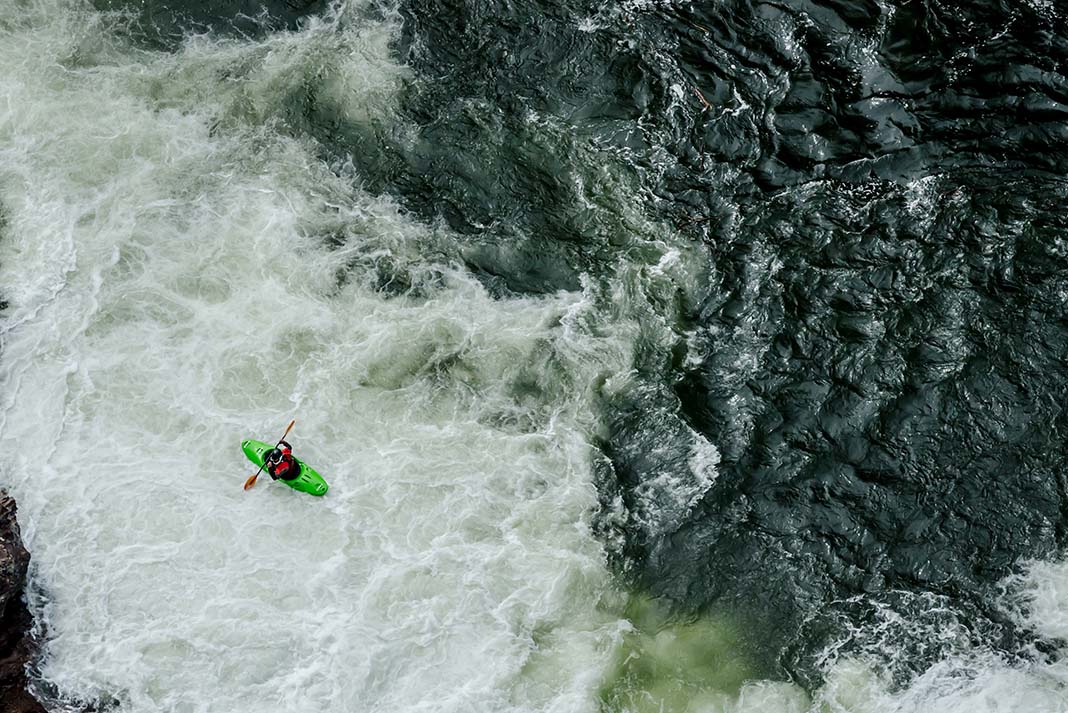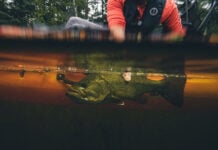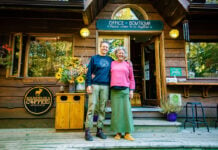At the height of the COVID-19 pandemic 18 months ago, Kelly McDowell told Paddling Business that he’d decided to suspend kayaking courses through the summer of 2020, even though customers were clamoring for instruction.
His shop, the Complete Paddler in Toronto, is one of the biggest paddling stores in North America, with a robust rental and instruction program augmenting the core retail business. As Toronto emerged from one of the strictest COVID-19 lockdowns on the continent in May 2020, demand for paddling gear and instruction shot through the roof. McDowell couldn’t get boats fast enough to satisfy his retail customers, let alone restock the rental and instruction fleet he’d sold off the previous fall. Instructors bowed out too, wary of close contact with students and potential legal liability should someone get sick.
So McDowell pulled the plug on his instruction program. Nearly two years later, it’s still shut down. This comes at a time when paddling instruction is needed more than ever. Participation is up across the board, but with classes and club outings still rebounding after a near-total shutdown in 2020, new paddlers in some areas are still largely on their own.
Meanwhile, the waterways are full of enthusiastic new paddlers, many of whom don’t know what they don’t know, said Trey Rouss, owner of The Power of Water in Lansing, Michigan. “All we have to do in our courses is present these two questions—and it doesn’t matter whether you’re a beginner who’s never paddled before or you’re level five at the top of the game—they’re always the same two questions: Should I be out here paddling today? And do I have a solution for when things don’t sort themselves out the way I expected them to?”
“All we have to do in our courses is present these two questions—and it doesn’t matter whether you’re a beginner who’s never paddled before or you’re level five at the top of the game—they’re always the same two questions: Should I be out here paddling today? And do I have a solution for when things don’t sort themselves out the way I expected them to?”
Just by talking to folks in his shop, McDowell can see they’re doing risky things without knowing any better. “One person paddled out into the middle of Toronto harbor and capsized in the busiest and widest section,” he said. “They were lucky they didn’t get run over by a ferry or succumb to the effects of the cold water because they weren’t dressed properly, either.”
Not everyone has been as lucky. According to the most recent U.S. Coast Guard data, paddling fatalities in the U.S. surged last year to 164 people, an increase of nearly 20 percent over 2019. Tellingly, almost three-quarters of those deaths involved people with less than 100 hours of paddling experience. Many who took up the sport in 2020 had little access to instruction because it just wasn’t available for much of the year.
“What we heard anecdotally from our instructors is that 2020 was just a wash. Most people were not teaching at all,” said American Canoe Association (ACA) President Robin Pope. “This past season, 2021, everything picked up dramatically and every instructor I know was teaching as much as they wanted.” The ACA certifies instructors in all paddling disciplines, and while it doesn’t track how many people take paddling classes each year, it has a very good handle on the number of certified instructors. That number dropped 17.9 percent, from 4,573 in 2019 to 3,821 in 2020. Most of those who did teach last year taught fewer courses.
“Normally, I’ll teach between 18 and 25 courses a year. Last year I gave three,” said Mike Aronoff, a veteran instructor-trainer and long-serving member of the ACA’s Safety, Education and Instruction Council. Like many of his colleagues, Aronoff adjusted the way he taught to mitigate the COVID-19 risk. He reduced his class sizes to no more than three people and sought groups already in close contact: a husband and wife, a brother and sister, and a group of coworkers. This year he’s on track to teach 28 courses, keeping some common-sense precautions in place and requiring all his students to be fully vaccinated.
Aronoff leaned heavily on the recommendations of an ACA panel led by Dr. Steven Henkind, an MD-PhD and ACA Level 4 instructor. The group included Pope, who works as a physician’s assistant by day, and other paddling instructors with medical training. The group’s guidelines for operating in a COVID-19 world was the most read email sent by the ACA in recent years.
“Fortunately, most of us weren’t very busy because we were in the middle of a lockdown for Covid, so we started with a lot of reading, pulling together best practices and CDC recommendations and figuring out how to apply those when we’re paddling,” Pope said. “Using paper surgical masks is great, but it doesn’t work when you’re wet.”

The group drafted core recommendations and vetted them with epidemiologists, public health experts and the wilderness medicine community, Pope said. “We essentially wrote a master’s thesis or doctoral dissertation on it and then summarized it for the ACA website. To my knowledge, nobody that followed those practices had a problem with infection.”
That’s heartening news for the paddlesports community. The barrier to instruction now isn’t so much the risk of infection, but the logistical hurdles that come as a result of the pandemic. While he’s still wary of the virus, the reason McDowell hasn’t resumed classes in Toronto is because he can’t spare the boats and instructors are in short supply. He can’t teach courses himself because he’s needed on the retail floor. His store is chronically understaffed.
However, even at the height of the pandemic last year, some found a way to continue teaching. Rouss hosted the Great Lakes Sea Kayak Symposium in July 2020, even as similar gatherings were canceled. He made the call in May, at about the same time McDowell decided to suspend instruction in Toronto.
“We had to make a decision, and what we discovered was that people were going out and doing stuff anyway. So our approach was to give them a little more structure and accountability to each other within the confines of what the CDC is recommending.”
“We had to make a decision, and what we discovered was that people were going out and doing stuff anyway. So our approach was to give them a little more structure and accountability to each other within the confines of what the CDC is recommending,” Rouss said. He implemented several protocols, from temperature checks and alcohol wipe downs to reducing the number of participants and assigning them to small pods. Everything was done outdoors, and none of the approximately 50 participants and instructors got COVID-19.
While many jurisdictions were tightening restrictions at the time, the host community of Grand Marais, Minnesota, welcomed the paddlers. “They were begging us to come up there, so that wasn’t an issue at all. In fact, we were more concerned about their lack of taking it seriously,” Rouss said.
Steve McKone, the director of Calleva’s River School near Glen Echo, Maryland, told DCist that after canceling a popular program in spring 2020 and partially refunding customers, Calleva went on to have its shortest and biggest season ever, beating its 2019 numbers by 20 percent. 2021 was another banner year, constrained only by the supply chain. McKone said he started the season with boats, paddles, life jackets and sprayskirts on backorder.
Like the pandemic itself, paddling instruction in the COVID-19 era has been a shifting patchwork of hotspots and empty quarters. It’s a dynamic environment, and as any good paddler knows, you don’t fight moving water. You flow with it.
The same is true in business. When COVID-19 hit last year, Anna Levesque dropped her group courses altogether, accelerating a planned switch to one-on-one coaching. She was lucky to have an established clientele, which, together with a Paycheck Protection Program loan, allowed her business to weather a lean year and come back stronger than ever. “I have a really strong relationship with most of my clients, and so most of them simply deferred to a year later,” said Levesque, an Ashville, North Carolina-based whitewater and SUP instructor who was recently elected chair of the ACA’s instruction council.
Levesque’s instruction business rebounded quickly after pandemic restrictions eased in North Carolina and COVID-weary paddlers returned to the river with the determination of spawning salmon. Her annual Costa Rica whitewater is sold out for the first time in years. It feels almost as if her business, and the paddling instruction game in general, is getting back to normal—or at least something close to it.
Photo: Adobe Stock







